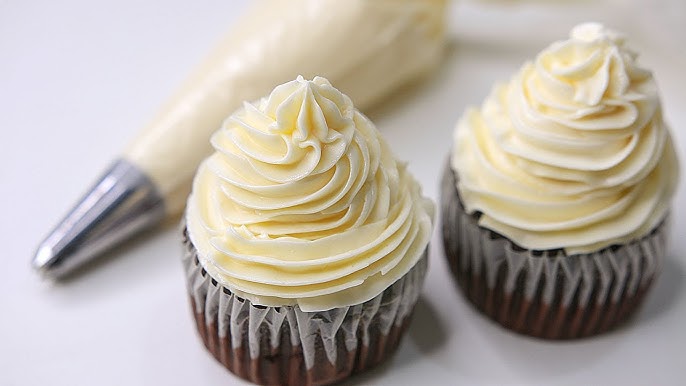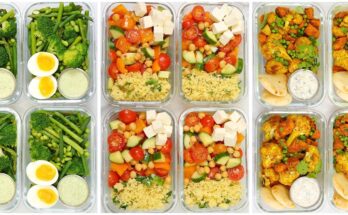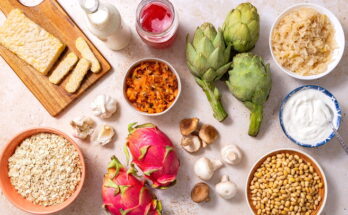Buttercream Frosting Recipe: Buttercream frosting is a classic favorite among home bakers and professionals alike. Its creamy, smooth texture and sweet flavor make it the go-to frosting for cakes, cupcakes, and cookies. Whether you want to create intricate designs or keep it simple with a delicious spread, buttercream offers unmatched versatility.
In this guide, I’ll walk you through a foolproof buttercream frosting recipe, share expert tips, and help you troubleshoot any issues.
Ingredients Needed for Buttercream Frosting
You only need a few simple ingredients to whip up buttercream frosting:
- 1 cup unsalted butter (softened)
- 4 cups powdered sugar (also called confectioners’ sugar)
- 2–3 tablespoons heavy cream or milk
- 1 teaspoon vanilla extract
- Pinch of salt
Optional: Cocoa powder for chocolate buttercream, food coloring, or flavor extracts (like lemon or almond).
Tips for Choosing the Right Ingredients
- Butter: Always use unsalted butter so you can control the saltiness. High-quality butter gives a richer flavor.
- Powdered Sugar: Sift it if it’s clumpy to ensure a smooth frosting.
- Flavoring: Vanilla is standard, but try experimenting with other extracts for a unique taste!
Equipment You’ll Need
- Stand mixer or hand mixer with whisk attachments.
- Large mixing bowl.
- Rubber spatula for scraping down the sides of the bowl.
- Measuring cups and spoons.
How to Prepare Buttercream Frosting – Step-by-Step
Step 1: Soften the Butter
Remove the butter from the fridge and let it sit at room temperature for about 30 minutes. You want it soft but not melted—this ensures a fluffy texture.
Step 2: Beat the Butter until Creamy
Using a stand or hand mixer, beat the butter on medium speed for about 2-3 minutes until it’s creamy and pale in color. This creates the base for a light, airy frosting.
Step 3: Gradually Add Powdered Sugar
Add the powdered sugar one cup at a time, beating slowly at first to avoid a sugar cloud. Once incorporated, increase the speed to medium and beat for about 2 minutes.
Step 4: Add Liquid Flavorings
Add the vanilla extract, a pinch of salt, and 2 tablespoons of heavy cream. Beat again until combined. If the frosting feels too thick, add an extra tablespoon of cream.
Step 5: Adjust the Consistency
For thicker frosting (perfect for piping), use less liquid. For a spreadable consistency, add more cream, one teaspoon at a time.
Step 6: Optional – Add Colors or Extra Flavorings
At this stage, you can add food coloring or extra flavor extracts like almond, lemon, or mint. Beat until the color is evenly distributed.
Pro Tips for the Perfect Buttercream Texture
- Avoid Gritty Frosting: Sifting the powdered sugar helps create a silky texture.
- Fixing Stiff Frosting: If it’s too thick, add cream little by little.
- Softening Overly Runny Frosting: Beat in extra powdered sugar.
Variations of Buttercream Frosting
- Chocolate Buttercream: Add ½ cup unsweetened cocoa powder.
- Vanilla Bean Buttercream: Use vanilla bean paste instead of extract.
- Lemon Buttercream: Add 2 tablespoons of lemon zest and 1 tablespoon of lemon juice.
- Salted Caramel Buttercream: Mix in ¼ cup caramel sauce and a pinch of sea salt.
Common Mistakes to Avoid
- Using Cold Butter: Always let your butter soften properly.
- Overbeating the Buttercream: This can create air bubbles, making the frosting less smooth.
- Adding Too Much Liquid: Go slowly with liquids to prevent runny frosting.
How to Store Buttercream Frosting
- Room Temperature: Can sit at room temperature for up to 2 days in a cool environment.
- Refrigeration: Store in an airtight container for up to a week. Bring it to room temperature before using.
- Freezing: Freeze for up to 3 months. Thaw overnight in the fridge, then re-whip it before using.
Using Buttercream Frosting for Cakes and Cupcakes
- Smooth Finish: Use an offset spatula to apply frosting evenly.
- Piping Tips: Use a piping bag with different nozzles to create borders or swirls.
- Layering Cakes: Spread a thin layer of buttercream between cake layers for stability and flavor.
Troubleshooting Buttercream Issues
- Too Runny: Beat in more powdered sugar or refrigerate for 15 minutes.
- Curdling or Splitting: If the frosting separates, warm it slightly and re-beat until smooth.
- Grainy Texture: Make sure to sift the powdered sugar beforehand.
Buttercream Frosting vs. Other Frostings
- Cream Cheese Frosting: Tangier but less stable than buttercream.
- Whipped Cream Frosting: Lighter but not ideal for detailed piping.
- Best Uses: Buttercream works well for cakes needing intricate designs.
Buttercream for Special Diets
- Vegan Buttercream: Use plant-based butter and non-dairy milk.
- Low-Sugar Buttercream: Replace some powdered sugar with stevia or monk fruit sweetener.
FAQs about Buttercream Frosting Recipe
1. What is buttercream frosting?
Buttercream frosting is a smooth, creamy icing made primarily from butter, powdered sugar, and flavoring agents like vanilla or cocoa. It is commonly used to decorate cakes, cupcakes, and cookies.
2. What are the main types of buttercream frosting?
There are several types, including American buttercream (the simplest and sweetest), Swiss meringue buttercream (smooth and stable), Italian meringue buttercream (light and glossy), and French buttercream (rich with egg yolks).
3. How do I make buttercream frosting from scratch?
To make American buttercream, beat softened butter until fluffy, gradually add powdered sugar, and mix in vanilla extract and a splash of milk or cream until the desired consistency is achieved.
4. How can I fix runny or too-thick buttercream?
If it’s too thin, add more powdered sugar. If it’s too thick, mix in a bit of milk or cream until it reaches the perfect texture.
5. How do I store leftover buttercream frosting?
Store it in an airtight container in the refrigerator for up to one week. Before use, bring it to room temperature and re-whip for smoothness.
6. Can I freeze buttercream frosting?
Yes, you can freeze it for up to three months. Thaw it in the fridge overnight, then whip it again before using.
7. How can I color buttercream frosting?
Use gel food coloring for the best results without altering the frosting’s consistency. Add a little at a time until you achieve the desired color.
8. How long can buttercream sit at room temperature?
Buttercream can stay at room temperature for up to two days. However, for best freshness, store it in a cool environment if not consumed immediately.
Conclusion
Buttercream frosting is a delightful addition to any baked good, and with a little practice, you can master it at home. Whether you’re decorating cupcakes or layering cakes, buttercream is the perfect canvas for creativity. Follow the steps carefully, avoid common mistakes, and don’t be afraid to experiment with flavors. Happy baking!
References
For further reading and to validate the information provided in the Buttercream Frosting Recipe, explore the following reputable sources:
- Food Network – Get expert tips and detailed steps on making classic buttercream frosting. Visit Food Network
- AllRecipes – Discover variations of buttercream and troubleshooting advice. Explore AllRecipes
- Bon Appétit – Learn how to elevate your frosting with unique flavors and professional techniques. Check Bon Appétit
- BBC Good Food – Find easy-to-follow buttercream recipes with useful serving suggestions. Browse BBC Good Food
These references provide valuable insights and practical tips to enhance your frosting-making experience. Explore them to master your buttercream skills with confidence!



